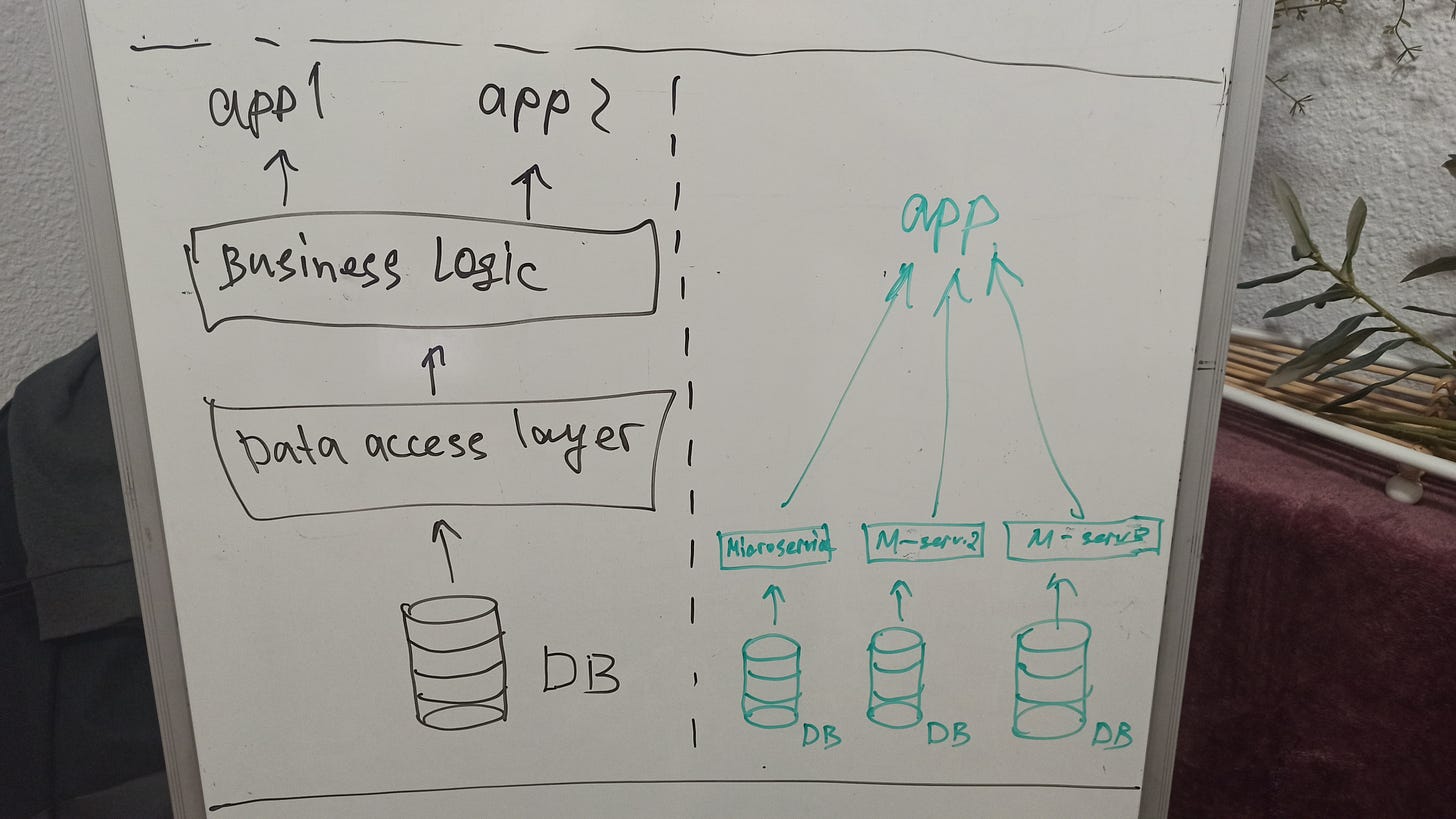These 22 Biotechs Collectively Raised $3.3 Billion in Q1 2024. What Do They Have to Offer?
ALSO: Weekly Tech+Bio News; NVIDIA Healthcare Unveils Generative AI Microservices In a Push to “Democratize“ Technology; New AI Model Designs Antibodies From Scratch
Hi! I am Andrii Buvailo, and this is my weekly newsletter, ‘Where Tech Meets Bio,’ where I talk about technologies, breakthroughs, and great companies moving the biopharma industry forward.
If you've received it, then you either subscribed or someone forwarded it to you. If the latter is the case, subscribe by pressing this button:
I have just published a new video to my Substack podcast, you may be interested in checking it out: How Precision Neuroscience and Drug Synergies Could Advance Neurology
Now, let’s get to this week’s topics!
Weekly Tech+Bio News:
💰 Capstan Therapeutics raises $175M to advance its messenger RNA technology for in vivo CAR-T cell therapies, targeting autoimmune diseases with its lead program, CPTX2309, aiming for more accessible and convenient treatments.
🔬 Johnson & Johnson MedTech partners with Nvidia to develop AI-driven tools for real-time surgical decision-making and clinician education, aiming to advance Surgery 4.0 with edge computing and AI platforms.
🔬 eGenesis successfully transplants the first genetically engineered pig kidney into a living human at Massachusetts General Hospital, marking a potential breakthrough in addressing the global organ shortage and opening a new era in transplantation medicine.
🚀 Mirador Therapeutics debuts with $400M funding to develop precision medicines for immune-mediated inflammatory and fibrotic diseases, leveraging their Mirador360platform, which combines human genetics and data science for therapeutic innovation.
💰 AstraZeneca announces a $2.4bn acquisition of Fusion Pharmaceuticals, specializing in radioconjugates for cancer treatment, marking a strategic move to enhance its oncology portfolio and compete in a market led by Novartis.
🔬 Owkin expands its collaboration with Sanofi to leverage AI for precision drug discovery in immunology, aiming to tailor treatments by identifying candidate gene targets and disease indications
🚀 Aily Labs, founded by ex-Novartis executive Bianca Anghelina, introduces a decision intelligence app for life sciences, achieving profitability in its first year with a 500% customer growth. The Munich startup recently raised $21 million in Series A funding, aiming to become the "Apple of AI" by simplifying organizational workflows across the value chain.
🔬 NVIDIA Healthcare launches a suite of generative AI microservices for the drug discovery, medical technology, and digital health, with over two dozen tools including imaging and molecular interaction models. The company aims to democratize access to advanced AI research tools across the industry.
🔬 GE HealthCare and Nvidia collaborate to launch SonoSAMTrack, an AI-powered research model for ultrasound imaging, enhancing diagnostics by segmenting anatomies and lesions.
🔬 QC Ware collaborates with NVIDIA to enhance drug discovery with Promethium, a quantum-inspired platform, leveraging NVIDIA Quantum Cloud to generate superior training data for AI-driven molecular simulations,
NVIDIA Healthcare Unveils Generative AI Microservices In a Push to “Democratize“ Technology
I can’t say enough how bullish I am about NVIDIA’s plans in life sciences and healthcare.
And here we have a new announcement where NVIDIA has introduced a collection of generative AI microservices, designed to enhance the capabilities in drug discovery, medical technology, and the digital health sectors. This is a kind of boring technical announcement, but it may have a serious impact on the technological advancement in the industry.
What are microservices, after all?
Microservices architecture is an approach to software development where an application is structured as a collection of loosely coupled, independently deployable services, each focused on a specific business capability.

In other words, companies can relatively easily (and I assume with a more flexible pricing model) integrate a very specific tool from the entire NVIDA platform into their R&D workflow and do it quickly. The NVIDIA service kind of becomes a part of your own software package, whatever you have.
I used to run an e-commerce department at a large chemical company, and we would create several microservices for the customers of our online store, so that they could automatically get all the information about molecules and molecular parameters directly into their drug design software.
So, our customers could get molecular data, pricing, and availability of molecules in real time while designing a lead compound in whatever software they normally use.
Coming back to NVIDIA microservices…
The suite comprises more than two dozen microservices, including advanced solutions for imaging, natural language and speech recognition, and digital biology generation, prediction, and simulation.
These services are built on NVIDIA NIM™ AI models and are integrated with industry-standard APIs to facilitate the development of cloud-native applications. The initiative is designed to assist healthcare enterprises globally to capitalize on generative AI technologies across various platforms, including cloud and on-premise setups.
Among the tools provided are NVIDIA accelerated software development kits such as Parabricks®, MONAI, NeMo™, Riva, and Metropolis, now accessible as NVIDIA CUDA-X™ microservices.
The NVIDIA NIM Healthcare Microservices for Inferencing includes a range of optimized inference models for applications in imaging, medtech, drug discovery, and digital health. It also features models for generative chemistry, protein structure prediction, and molecular interaction understanding, aimed at bolstering drug discovery efforts.
Notably, Cadence, a computational software company, is integrating NVIDIA BioNeMo™ microservices into its Orion® molecular design platform.
The healthcare microservices have already seen adoption by nearly 50 application providers, biotech and pharma companies, and medical imaging software makers, demonstrating the broad interest and potential impact of this technology in the healthcare sector.
In addition to advancing drug discovery and medical research, these microservices also aim to improve patient and clinician interactions.
Companies like Hippocratic AI and Abridge are developing AI-powered platforms and agents to facilitate patient engagement and streamline clinical documentation processes, respectively.
Availability of these microservices extends to developers through the NVIDIA AI Enterprise 5.0 software platform, with support for NVIDIA-Certified Systems™ from leading technology providers and cloud platforms.
Basically, NVIDIA is building the industry-wide software infrastructure for AI-driven research. And, of course, NVIDIA controls the hardware part, the GPUs, so it seems like the company is going to be a big deal in pharma/biotech/healthcare over the coming years (certainly not a financial advice, just in case, I do not even have NVIDIA stocks at the moment).
Availability: developers can experiment with NVIDIA AI microservices at ai.nvidia.com and deploy production-grade NIM microservices through NVIDIA AI Enterprise 5.0 running on NVIDIA-Certified Systems™ from providers including Dell Technologies, Hewlett Packard Enterprise, Lenovo and Supermicro, leading public cloud platforms including Amazon Web Services (AWS), Google Cloud, Microsoft Azure and Oracle Cloud Infrastructure, and on NVIDIA DGX™ Cloud.
New AI Model Designs Antibodies From Scratch
Researchers, under the guidance of David Baker at the University of Washington, used a generative AI model developed in their lab, to successfully engineer an antibody that neutralizes a bacterial toxin alongside three others targeting the viruses responsible for Covid-19, RSV, and the flu.
This innovative research, detailed in a study published on bioRxiv, demonstrates the capabilities of their AI model in crafting antibodies that precisely target proteins as intended by their creators.
This method diverges from traditional approaches that involve searching through the blood of mice or humans for suitable antibodies.
The utilization of AI in de novo protein design, aiming to generate novel proteins not found in nature, holds real potential for the pharmaceutical industry and for synbio.
Baker's Institute for Protein Design created binding proteins that, until now, were simpler compared to the complex structures of standard antibodies.
The institute's latest work with the RFdiffusion software showcases AI's ability to design antibodies that precisely align with specific targets on bacterial or viral proteins, a significant advancement over traditional methods.
The successful prediction and validation of these antibody structures through high-powered microscopy underscore the accuracy of the AI model, marking a "a-ha moment" for the researchers involved.
Watch a video in this LinkedIn post of how RFdiffusion software creates an antibody in real time:
Still Challenging…
Critiques from the scientific community highlight that while the work represents a significant step forward, the developed antibodies currently lack the strong binding affinity necessary for therapeutic applications.
David Baker acknowledges this limitation, emphasizing the need for further refinement before these antibodies can be considered for drug development.
Nicholas Polizzi, a protein scientist at Dana-Farber Cancer Institute, points out the limitations posed by insufficient data and the initial focus on targets with existing antibodies, suggesting room for growth in tackling more novel and challenging drug targets.
AI-driven antibody design is on the rise
I have explored the topic of AI-driven antibody design in one of the previous newsletters, but just to mention a couple of notable companies in this space:
Generate:Biomedicines, Absci, BigHat Biosciences, Nabla Bio, and Cradle.
Here is my video-interview with Dr. Elise de Reus, Co-founder of Cradle, where she explains how the company applied generative AI for designing protein-based therapeutics, including antibodies.
These 22 Biotechs Raised Collectively $3.3 Billion in Q1 2024. What Do They Have to Offer?
The biotech industry is experiencing a big wave of investment, similar to the high levels seen between 2020 and 2021.
In just the last three months, there's been a rush of big money deals, with companies like Engrail Tx, Clasp Tx, Capstan Tx, and Mirador Tx announcing large funding amounts of $157 million, $150 million, $175 million, and $400 million, respectively.
Since the beginning of the year, 22 biotech startups have raised over $100 million each, representing more than a dozen of therapeutic areas (see table below).
Investors are showing interest in companies that are close to or in the middle of clinical trials, which means they're testing their treatments on people. For instance, out of the 22 biotech startups with significant rounds in 2024, only 6 are in the preclinical stage.
Another quite expected insight, as you can see in the table, is that the majority of them, 10 companies, are focused on oncology as a key area:



